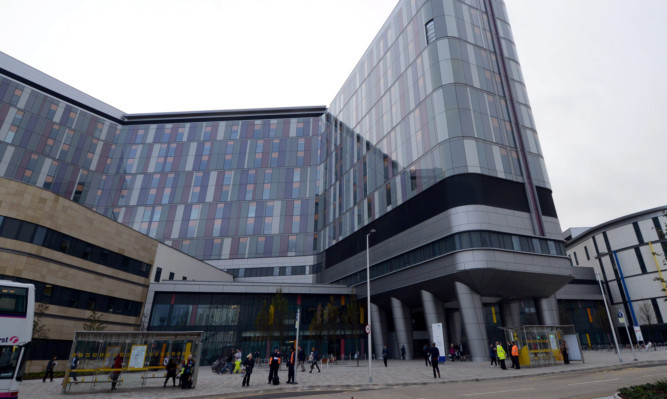Concerns have been raised by inspectors over staffing and care at a hospital unit for elderly patients and stroke victims.
Healthcare Improvement Scotland (HIS) said one of the wards at the Langlands Unit, which is part of the Queen Elizabeth University Hospital campus in Glasgow, was “short-staffed every day that it was visited by the inspectors”.
There was no senior charge nurse on ward 56, with inspectors saying this “resulted in a lack of leadership which contributed to our concerns about patient safety”.
The Langlands Unit has seven wards with a total of 210 beds, and while it is part of the Queen Elizabeth University Hospital campus it is in a separate building.
An unannounced inspection was carried out in September, with HIS reporting concerns about “a lack of leadership, low staffing levels, poor nutritional care, a lack of, or delayed, referrals to dietitians, poor completion of documentation, and locked wards restricting patient access in and out of the wards”.
While inspectors said most patients who needed assistance to eat their meals “received help in a timely manner”, they also said there was an “inconsistent approach to staff going back to check patients were managing with their meal or to encourage patients to eat as much as they could”.
Their report said: “We also observed some staff standing over patients to give them their meal, which was not respectful, and one patient lying in bed with their meal on the bed table – this patient’s meal sat for 15 minutes before one of the inspectors had to alert trained staff.
“Completion of food record charts was poor. It was often unclear what food had been offered to the patient and what had actually been eaten.”
Inspectors also found some patients had lost considerable amounts of weight without staff being aware, stating one person who was “at high risk of malnutrition” had lost 7kg in the 10 days following their admission.
Some patients waited two weeks to be seen by a dietician, the report said, adding that meal times “appeared chaotic” and there was no assurance that those needing tube feeding were getting this “due to poor completion of documentation”.
Margaret McGuire, NHS Greater Glasgow and Clyde (NHSGGC) nurse director, said: “The key pad entry system referred to within the Langlands Unit has already been taken out of use and a new arrangement to protect vulnerable patients has been introduced. Every patient is individually assessed and if required an activity tracker is worn by them with the full consent of their families. This new arrangement follows best practice in accordance with the Mental Welfare Commission’s guidance.
“Record keeping has again been highlighted by the inspectorate team as being inconsistent. I am confident that this is not a reflection on the care being given – our staff put patients at the forefront of everything they do.
“However I appreciate that good record keeping is a vital component of care and communication between staff and with patients and relatives, and I have personally overseen a process to reinforce and monitor effective record keeping. This includes the introduction of a daily process of spot checks to ensure that care plans are being completed and are reflecting the care being delivered.
“I want to offer reassurance that an assessment of staffing levels is made in each and every ward across NHSGGC on a day-to-day basis to ensure that staffing levels are safe and appropriate.
“We were always clear, however, that we would review nursing and midwifery staffing levels once the new model of acute services was in place. This work is under way and I am pleased that the chief nursing officer is working with me on this.
“I have also agreed with Healthcare Improvement Scotland for the improvement adviser who will be working with our teams to focus on providing support for the improvements that we are putting in place within the Langlands Unit.”
